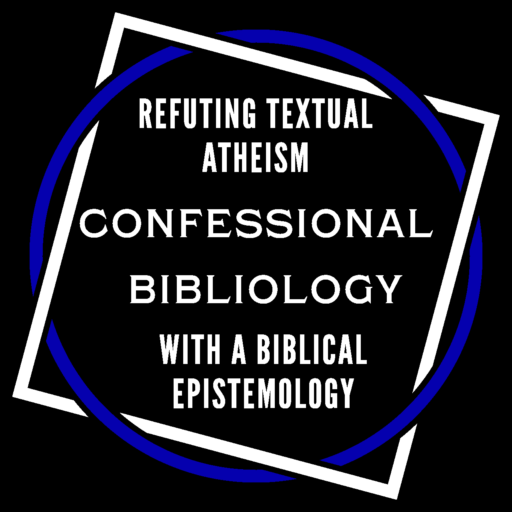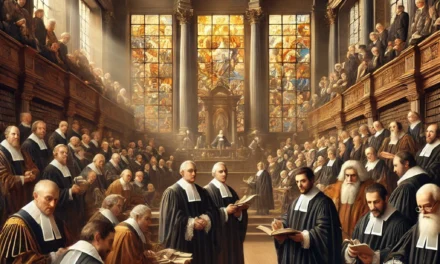Article 8: Reformation-Era Confessions and the Pure Text – Comparing Confessional Statements
Introduction
The Protestant Reformation was a watershed moment that radically reshaped Christian theology, worship, and church governance. Yet behind its visible transformations in doctrine and practice lay a deep-rooted assumption: that the Scriptures—God’s inspired Word—were reliably preserved through centuries of transmission. Protestant leaders and communities did more than preach or teach; they codified their convictions in formal confessional statements. From the early French Confession (1559) and the Scots Confession (1560) to the Belgic Confession (1561) and culminating in the Westminster Confession of Faith (1646), these documents each bore witness to a shared stance that the biblical text remained essentially pure.
In this final article of our series, we will:
- Survey several key Reformation-era confessions, identifying their views on Scripture’s authority and purity.
- Explore how each confession’s stance reflects or develops the notion of providential preservation.
- Compare them in their historical contexts, highlighting both unique and common themes.
- Reference the analyses of Richard A. Muller (Post-Reformation Reformed Dogmatics, Vol. 2), Garnet Howard Milne (Has the Bible Been Kept Pure?), and John Owen (Works, Vol. 16) to show how these confessional statements formed a coherent testimony to the doctrine of the “pure text.”
We will see that, taken together, these confessions collectively proclaim that the same God who inspired Scripture also ensured its survival in a form sufficient to govern Christian faith and life.
I. The Emergence of Reformed Confessions
1. The Context of 16th-Century Protestantism
As soon as the Protestant Reformation took shape—beginning with Martin Luther (1517) and swiftly expanding—different regional churches and clusters of theologians composed confessional documents. These confessions functioned as authoritative expositions of doctrine. Historian and theologian Richard A. Muller points out that these statements addressed core tenets such as the Trinity, Christology, justification by faith, and, crucially, the doctrine of Scripture.
Sola Scriptura (Scripture alone) was the rallying cry, and it necessitated that these new Protestant churches articulate why and how Scripture could be wholly trusted. Part of that explanation included an affirmation—sometimes implicit, sometimes explicit—that the biblical text was reliably transmitted by God’s providential oversight.
2. The Shift from Individual Reformers to Corporate Confessions
Where Luther’s early texts (e.g., The Babylonian Captivity of the Church) and Calvin’s Institutes shaped theological debates, the Reformed confessions represent a collective voice. They are not the private opinion of a single reformer but the settled stance of entire churches or synods. This collective dimension further underscores the uniform conviction that God’s Word, though copied and translated across centuries, endured in a fundamentally uncorrupted state. As we shall see, references to Scripture’s purity or sufficiency pervade them.
II. Early Confessions: French, Scots, and Belgic
1. The French Confession (1559)
- Historical Setting: Also known as the Gallican Confession, it was authored mainly by Calvin and other French Reformed pastors for the persecuted Huguenots.
- Affirmation of Scriptural Authority: Article 5 declares that “We believe that the Word contained in these books [the canonical Scriptures] has proceeded from God, and receives its authority from him alone.”
- Implied Trust in Preservation: Although it does not use the phrase “kept pure in all ages,” the confession’s unwavering reference to “the Word contained in these books” as fully reliable implies a stable textual tradition. John Owen, writing later, frequently cites early statements like this as historical precedents for the idea that God did not allow His Word to be lost or seriously corrupted.
- Pastoral Note: A persecuted minority in France would hardly rely upon Scripture if they suspected it was riddled with unrecoverable errors. Their public stance signaled robust confidence in its essential purity.
2. The Scots Confession (1560)
- Scottish Reformation: Primarily penned by John Knox and five other “Johns” (the “Six Johns”), it shaped the newborn Reformed church in Scotland.
- Scripture’s Place: The confession stands strong on Sola Scriptura, insisting that the Holy Spirit, who “inwardly moves us,” testifies to Scripture’s divine origin.
- Connection to Preservation: While it lacks a direct statement akin to “by God’s care Scripture was kept pure,” the Scots Confession repeatedly underscores the Word’s unshakable authority in doctrine and reproof. This can only make sense if its authors believed that the text circulated among them—Hebrew for the Old Testament, Greek for the New—was indeed trustworthy.
- Historical Observation: Richard A. Muller notes that 16th-century Scottish reformers exhibited no anxiety about lost manuscripts or fatal corruptions; their entire ecclesiastical framework pivoted on Scripture’s abiding clarity and reliability.
3. The Belgic Confession (1561)
- Dutch Reformation: Drafted under the main authorship of Guido de Brès, influenced by Calvinistic theology, to serve as a unifying statement for Reformed churches in the Low Countries.
- Article 2 outlines the means by which we know God—the creation and, more perfectly, His holy and divine Word.
- Article 7 famously proclaims that “the Holy Scripture contains fully all things necessary to be believed … for salvation,” and it “does not need the doctrines or traditions of men.” That it “contains fully” signals that the text is effectively complete and not irreparably corrupted.
- Confidence in Original Tongues: The confession underscores the importance of the Hebrew and Greek texts, reminiscent of a principle advanced by earlier Reformers. Implied is that these languages remain authentic containers of God’s truth.
- Milne’s Perspective: Garnet Howard Milne correlates statements like Article 7 with a presupposition of textual continuity. If one doubts the text’s essential purity, it is difficult to maintain that Scripture “contains fully” the needed truths.
III. The Culmination at Westminster (1646)
1. The Westminster Confession of Faith
By the mid-17th century, the Reformed tradition had matured in English-speaking contexts, culminating in the Westminster Assembly (1643–1653), which produced the Westminster Confession of Faith (WCF). Chapter 1 (“Of the Holy Scripture”) reaffirms earlier confessional emphases but adds further clarity.
- WCF 1:8: “The Old Testament in Hebrew … and the New Testament in Greek … being immediately inspired by God, and by His singular care and providence kept pure in all ages, are therefore authentical.” This explicit phraseology surpasses the earlier confessions in directly naming God’s providence as the source of textual purity.
- Final Appeal: WCF 1:10 states that in controversies, the final appeal is to “the Holy Spirit speaking in the Scripture.” The synergy of 1:8 and 1:10 cements the Reformed position that Scripture’s authority and textual preservation go hand in hand.
2. Role of John Owen’s Theology
John Owen (1616–1683), though not a direct member of the Westminster Assembly, stands within the same Puritan/Reformed milieu. In his works—particularly Of the Divine Original of the Scriptures—Owen systematically buttresses the Confession’s stance by explaining how “by His singular care and providence” cannot mean an absence of scribal variants but does mean no essential article of faith or crucial segment of biblical teaching is lost.
Garnet Howard Milne, in Has the Bible Been Kept Pure?, elaborates that the Confession’s phrase “kept pure in all ages” is not rhetorical flourish but the end-product of a robust theological tradition, which was already adumbrated in confessions like the French, Scots, and Belgic.
IV. Comparisons and Observations
When comparing these confessions—French (1559), Scots (1560), Belgic (1561), and Westminster (1646)—we see:
Common Doctrinal Ground
- All uphold Scripture as the ultimate rule of faith, effectively dethroning the institutional church from a co-equal or higher position.
- Each presumes, more or less explicitly, that Scripture’s text is available, intact, and trustworthy.
Progress in Precision
- Earlier confessions speak with implicit confidence in the text, linking it to the Holy Spirit and the “Word of God.”
- The Westminster Confession is more precise, explicitly stating “by His singular care and providence kept pure in all ages.” According to Richard A. Muller, this is characteristic of later Reformed orthodoxy—greater specificity in systematic statements.
Context of Controversies
- The French and Belgic Confessions arose amid Roman Catholic and Lutheran challenges, urging a stance on Scripture’s sufficiency.
- Scots faced the battle for a national church identity distinct from Episcopal authority.
- Westminster confronted elaborate theological debates, building on a century of Reformed reflection, culminating in the direct mention of God’s providential oversight of the text.
A Clear Trajectory
- The same theological impetus—Sola Scriptura—pervades each. Because they collectively hold that Scripture stands supreme, they necessarily adopt a posture that Scripture is not so corrupted as to undermine that supremacy.
V. Historical Affirmation of Textual Purity
Richard A. Muller and Garnet Howard Milne both highlight how even early confessions, though not using the term “providence,” rely on a centuries-old Christian consensus that Scripture had come down to them reliably. Such trust was not “invented” by the Reformers but found impetus in the ongoing tradition:
- Patristic Era: The fathers quote Scripture as final authority against heretics (e.g., Irenaeus vs. Gnostics, Tertullian vs. Marcion), implying it remains intact.
- Medieval Scholasticism: Though the Latin Vulgate reigned, reliance on a stable biblical text was widespread for theological reflection.
- Reformation: Re-engagement with Greek and Hebrew intensifies the emphasis on Scripture’s pristine origins and continuing purity, culminating in the confessional pronouncements we see.
VI. John Owen’s Insight on Confessional Continuity
Although Owen wrote after many of these confessions had been established, he demonstrates how their statements about Scripture’s purity align with a deep theological logic:
- Scripture’s Divine Original: Because it is God-breathed, he reasons, God remains responsible for preserving it against destructive corruptions.
- Ecclesial Reception: The historical church has served as a caretaker—copying, studying, translating—yet never faced a crisis of total textual dissolution. Each confession’s calm assumption of Scripture’s reliability testifies to this.
- No Major Contradictions: Owen insists that if any confession implied the text was lost or uncertain, it would sabotage the Reformation. Instead, they uniformly assume the text to be trustworthy in the essential sense.
Reading Owen back into these confessions clarifies how the Puritan mind recognized a single thread weaving through them all: the abiding presence of God’s Word as a living, accessible standard.
VII. The Pastoral and Polemical Uses of These Confessions
1. Pastoral Assurance
For local congregations, confessions served as teaching tools. They answered a deeply pastoral question: “Can we be certain that what we read in the Scriptures truly represents God’s revelation?” Each confession’s stance provided a resounding “Yes.” The pastors who taught from these confessions reinforced the notion that believers, in reading Scripture, encountered God’s own voice—guarded by the Spirit across time. This had enormous implications for personal devotion, preaching, and theological stability.
2. Polemical Defense
The confessions also had a polemical edge, particularly against Roman Catholic claims of a corrupted Hebrew or Greek text, replaced by the allegedly purer Latin Vulgate. By emphasizing the authenticity of the original languages, the Reformed confessions contended that the church universal never lost the real Word of God, and that final appeal should be made to the sources themselves, not the Vulgate. This, in effect, was a direct blow to Catholic arguments raised at the Council of Trent (1545–1563).
Garnet Howard Milne illustrates how the Westminster Confession’s reference to “kept pure in all ages” was a direct retort to such Catholic objections. Likewise, John Owen frequently engaged with those who insisted on the Vulgate’s primacy by demonstrating the abiding reliability of the Hebrew and Greek tradition.
VIII. Looking Forward: Confessional Statements Today
While these Reformation-era confessions were framed centuries ago, their impetus endures in many Protestant circles:
Continued Affirmation: Churches that subscribe to the Westminster Standards, the Three Forms of Unity (Belgic, Heidelberg Catechism, Canons of Dort), or other classical Reformed confessions, still rely on the underlying claim that the Bible’s essential text is preserved. This anchors their public worship, catechesis, and doctrinal disputes.
Modern Textual Criticism: Post-Reformation confessions did not address the complexities of modern textual criticism (manuscript discoveries like Codex Sinaiticus, papyri, the Dead Sea Scrolls), yet they set the theological posture to interpret these findings. Richard A. Muller notes that the confessional tradition, while not ignoring scribal variations, remains confident no crucial teaching was lost.
Ecumenical Dialogue: Interestingly, the Reformed tradition’s emphasis on the pure text has found parallels in some Lutheran and Baptist confessions, as well as partial resonance among modern conservative Catholics who also affirm scriptural inerrancy (albeit within different ecclesial structures). The unity is around Scripture’s reliability, though the exact articulation of “kept pure in all ages” can vary.
Ultimately, the synergy between Reformation-era confessions underscores how crucial Scripture’s reliability was for shaping the Protestant identity. By reading them as a collective witness—French (1559), Scots (1560), Belgic (1561), culminating in Westminster (1646)—we see a consistent emphasis: Scripture, though ancient, is not an uncertain relic. Instead, it is God’s abiding Word, through which believers learn of salvation, shaping the church’s faith and practice.
Conclusion
Across the Reformation period, confessions of faith emerged as theological roadmaps, guiding entire communities in their understanding of God, salvation, the sacraments, and, central to it all, Scripture. Whether the French Confession, the Scots Confession, the Belgic Confession, or the more detailed Westminster Confession, each testifies to an underlying principle: that the Holy Scriptures, in their original languages, possess an integrity and authority grounded in divine providence.
The progression from the earlier confessions to Westminster’s explicit mention of the text being “by His singular care and providence kept pure” reveals a theological trajectory: the earlier statements were more general, simply assuming Scripture’s reliability, while the later confessions made the logic of providential preservation explicit in confessional language. Richard A. Muller recognizes this as part of the developing nuance within Reformed scholasticism, while Garnet Howard Milne clarifies that such statements were conscious counters to challenges regarding textual corruption—particularly from Roman Catholic opponents. Meanwhile, John Owen provided the systematic backbone, showing that no matter the small scribal variations, the essential “Divine Original” stands inviolate.
For modern believers, these confessions still speak across the centuries. They affirm that, from a theological vantage point, if the gospel is indeed “the power of God unto salvation” (Romans 1:16) and Scripture is the normative channel of that gospel, then God has so acted as to preserve this Word. The Reformation-era confessions, diverse in location yet united in stance, remain a formidable collective witness to the Bible’s purity—and thus to its ongoing authority as the church’s supreme rule of faith. Hence, the “pure text” that the Reformers cherished and codified in their doctrinal statements stands as an enduring testament: God’s Word, given and maintained by His sovereign hand, rules His people in every generation, from the 16th century to the present day.




